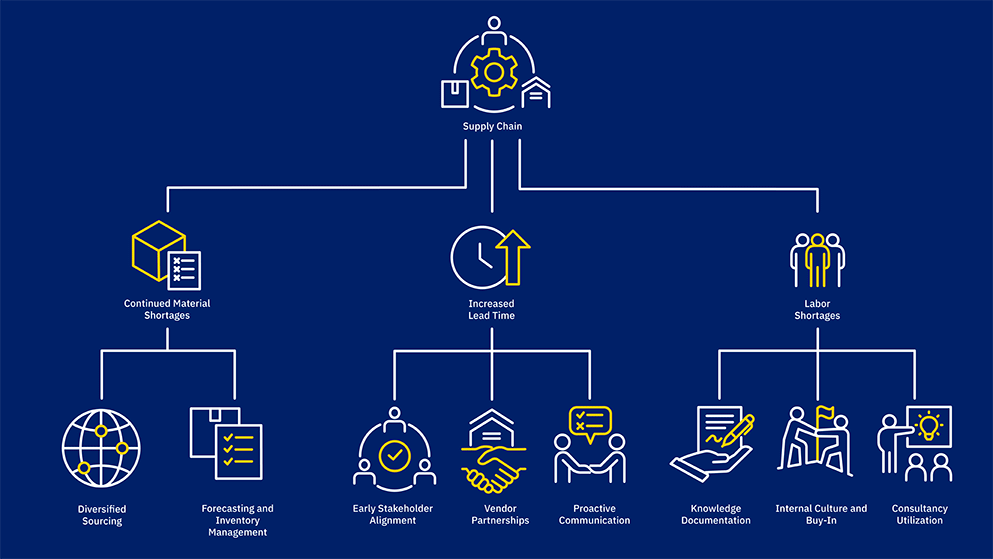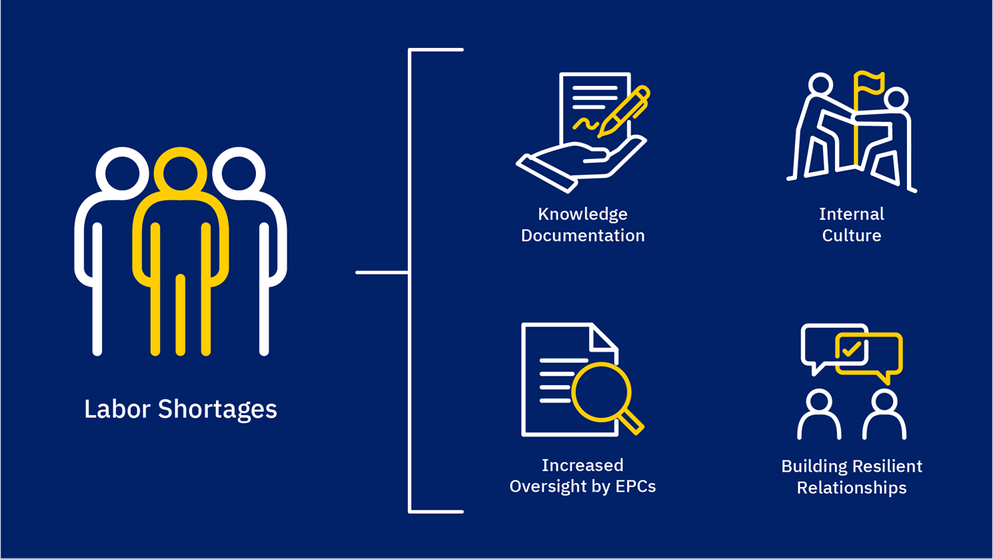The past five years have seen monumental shifts in the global supply chain, primarily instigated by the COVID-19 pandemic and subsequent world events. These challenges compelled many industries to adapt and innovate rapidly, reshaping the future of supply chains into adopting more resilient and versatile strategies.
As a leader in top-tier EPC, S&B has been at the forefront of these changes, leveraging its expertise to address emergent supply chain issues. Let’s look at three major trends influencing the future of the supply chain and discuss strategies companies can adopt to successfully navigate the evolving procurement landscape.
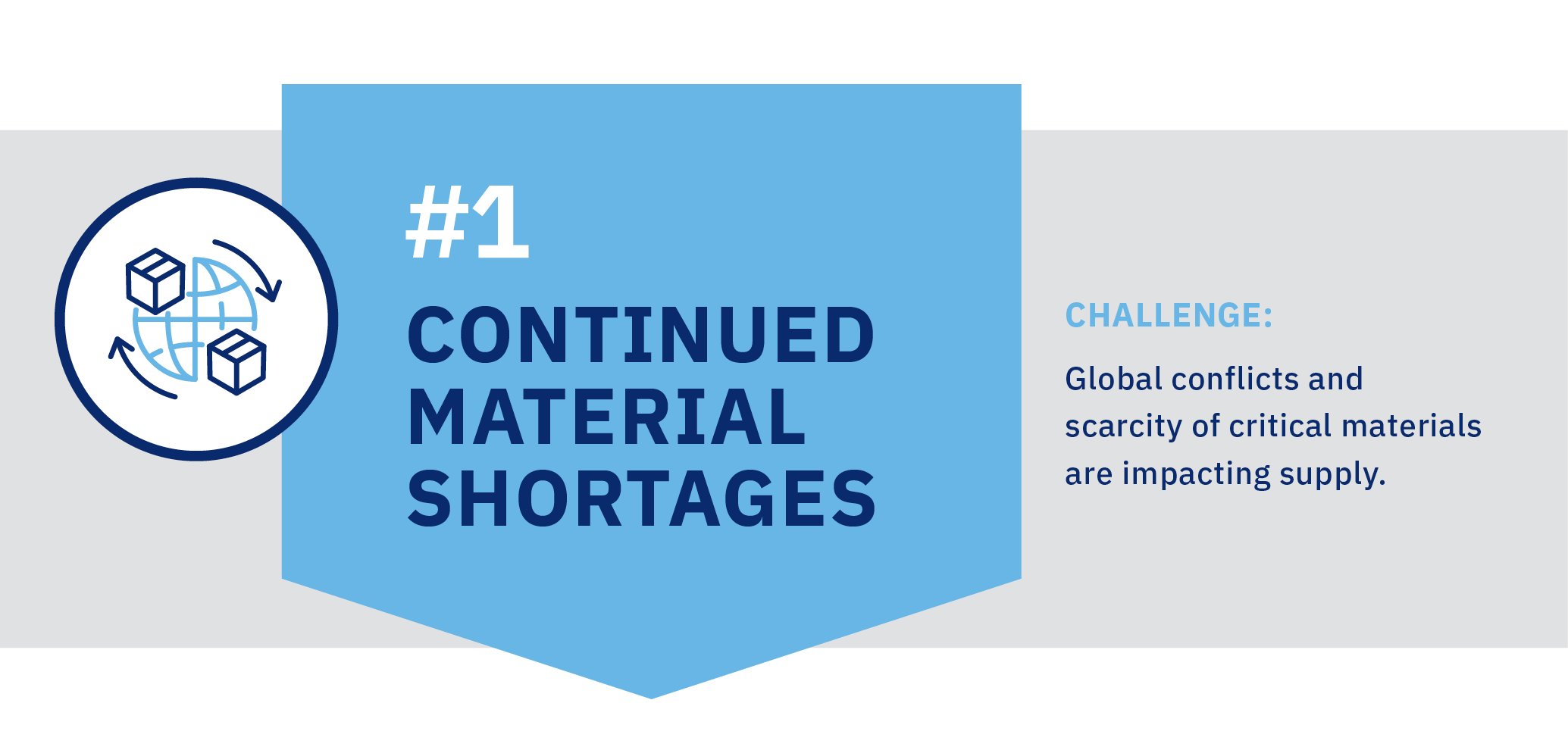
Trend #1: Continued Material Shortages
Although the severity of material shortages has shown signs of improvement, specific components remain difficult to source consistently. Global conflicts, such as the ongoing war in Ukraine, and extended international travel routes have significantly impacted the availability of critical materials like neon gas, copper, and aluminum that are essential for manufacturing certain components.
Key Strategies to Manage Material Shortages
To combat these challenges, it's crucial to adopt a multifaceted approach:
● Diversified Sourcing: Engage multiple suppliers across different regions to mitigate the risk associated with geopolitical instability. You may also need to explore alternative sourcing options, substitute materials, or redesign components if primary suppliers face constraints.
● Forecasting and Inventory Management: Enhance forecasting accuracy and maintain strategic reserves of key materials to prevent production halts due to sudden shortages. Perform risk assessments on the supply chains of critical materials to identify potential vulnerabilities like global trade tensions, environmental regulations, or supplier capacity issues to develop sufficient contingency plans.
A top-of-mind risk is that delays—even those as short as a few weeks—can ripple through the entire project timeline and cause serious challenges to maintain cost and schedule commitments. By maintaining a proactive relationship with vendors and partnering closely to tackle issues, you can help ensure a more predictable and reliable supply chain.
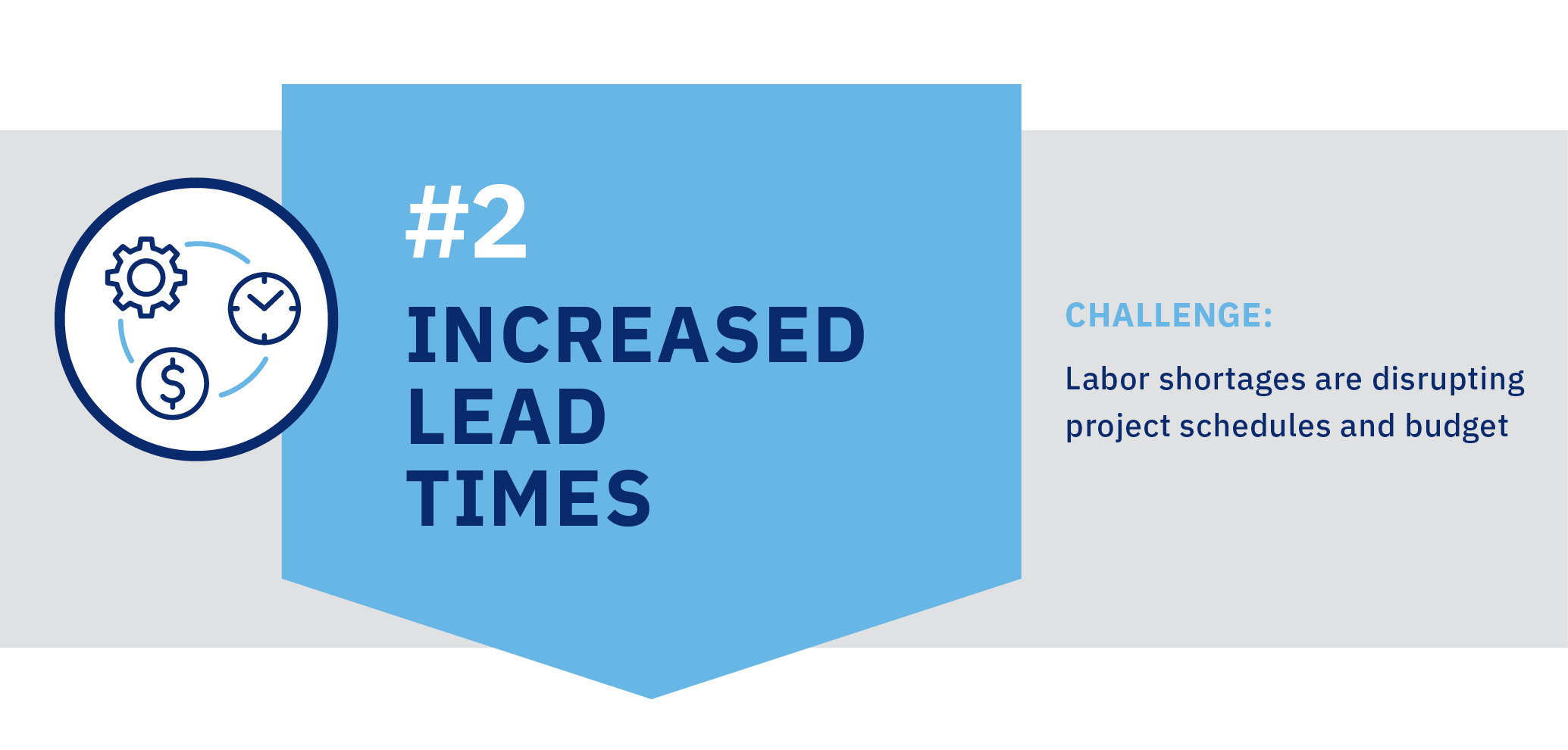
Trend #2: Increased Lead Times
Beyond material shortages, increased lead times for engineering tasks significantly affect project schedules and budgets. Although customers may expect prices and delivery to return to pre-pandemic levels, the reality is that labor shortages and extended vendor timelines continue to exacerbate the complexities of the procurement process.
Smart Approaches to Lead Time Challenges
Effective strategies to mitigate these challenges include:
● Early Stakeholder Alignment: Engage all stakeholders early in the project to align goals, scope, and execution plans. This collective understanding reduces the chances of unexpected lead times disrupting schedules.
● Vendor Partnerships: Build trust and transparency with vendors to enable timely delivery and problem-solving, curbing potential bottlenecks. Part of maintaining that strong relationship involves prompt payment schedules. This will help foster a cooperative partnership that motivates optimized cost, efficient delivery and problem-solving.
● Proactive Communication: Establish regular dialogue throughout the project lifecycle to ensure alignment and allow for the early identification and resolution of issues. Having early visibility into potential timeline disruptions will reduce the chances of a surprise that can derail a project.
By maintaining open communications with clients and vendors and ensuring transparency, companies can navigate lead time challenges effectively and uphold commitments to project delivery. This will strengthen the relationship with project stakeholders and increase trust in EPC partnerships.
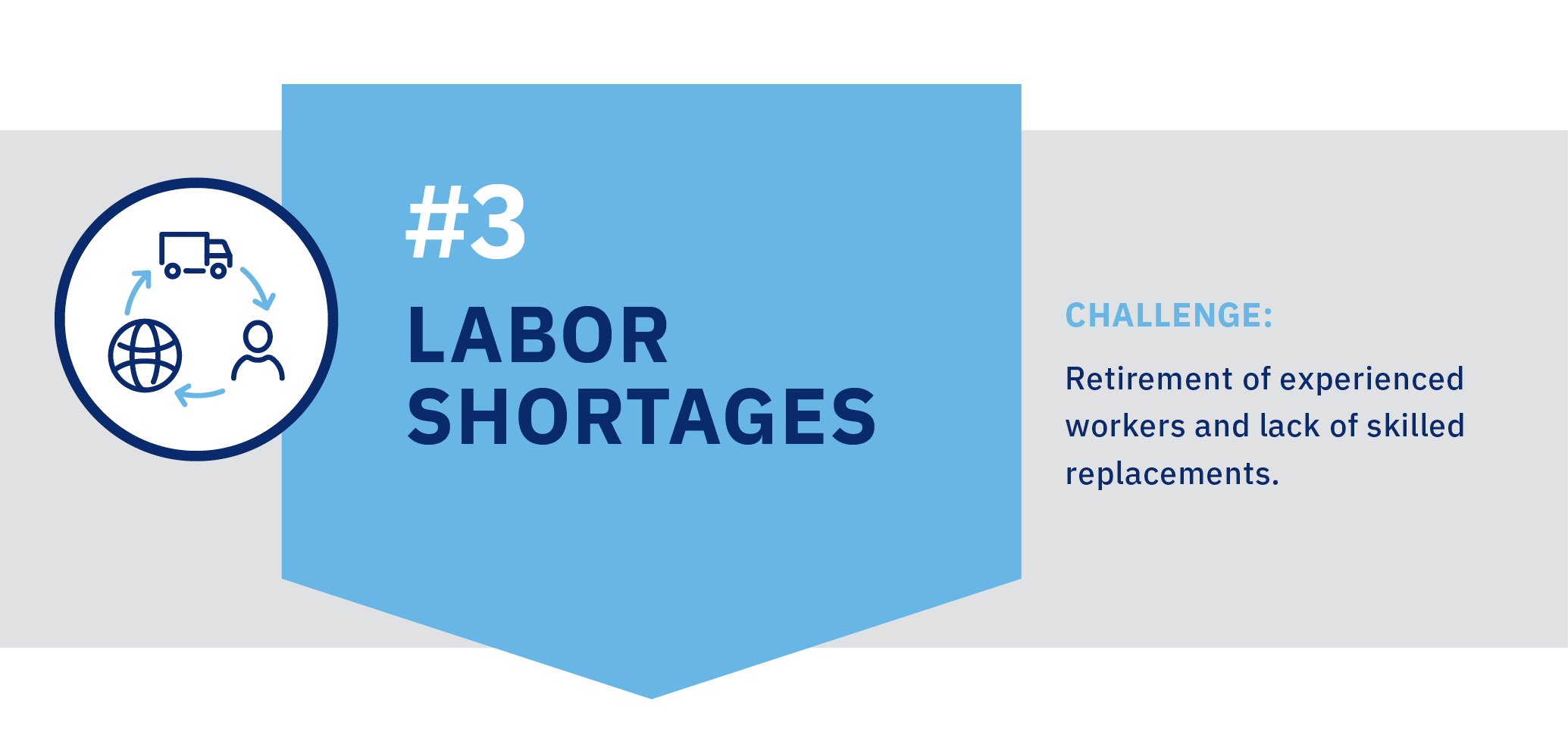
Trend #3: Labor Shortages
One of the most pressing threats to the supply chain is the shortage of experienced labor, particularly in the fabrication of specialized materials. As seasoned professionals retire, there is a critical need to document and transfer their knowledge to bridge the experience gap and sustain operational efficiency.
Essential Methods to Address Labor Shortages
Key strategies to address labor shortages include:
● Knowledge Documentation: Capture the knowledge of experienced workers through documentation and standardized processes to avoid the loss of critical knowledge. By recording documented knowledge, companies can refine and improve upon strategies that work.
● Internal Culture and Buy-In: Foster a collaborative culture that values employee contribution to increase engagement and efficiency. Investment into employee growth is a vital part of building that culture — and will often result in teammates paying back that investment with increased productivity and buy-in to the organization’s mission.
● Consultancy Utilization: Bring in experienced consultants to guide teams and mentor younger employees to enhance your project capabilities. Avoid the abrupt loss of valuable experience due to retirement by offering part-time consultant positions to experienced teammates on the way out.
By creating an environment where employees are dedicated to a shared mission, companies can effectively counter the impact of labor shortages. Developing a collaborative culture with a focus on knowledge transfer ensures continuity and enhances project execution even amid workforce challenges.
Driving Successful Project Outcomes
Effective preparation for supply chain issues yields substantial benefits, ensuring that projects are delivered timely and within budget. At S&B, our clear-minded focus on building robust vendor relationships forms the backbone of our approach to mitigating supply chain challenges. By prioritizing transparency, early stakeholder alignment, and nurturing a collaborative internal culture, we consistently enable project success.
If you’re interested in how S&B’s emphasis on project certainty and strategic alignment can drive successful project outcomes, we invite you to learn more about our integrated problem-solving approach. Contact us to explore how we can help your organization overcome supply chain challenges and propel your projects to success.

